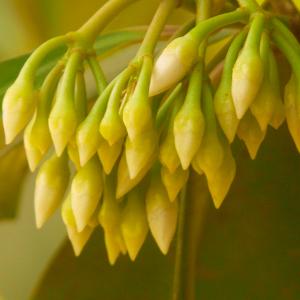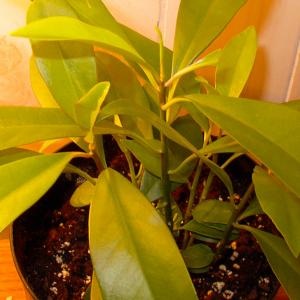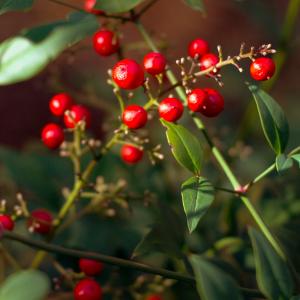
Backpacking through Southeast Asia can be an unforgettable experience for any traveler. With its beautiful beaches, lush jungles, rich culture, and delicious food, it’s no wonder why this region has become a popular destination for backpackers from all over the world. However, planning a trip can be overwhelming, especially for those who are new to backpacking or unfamiliar with the area. In this beginner’s guide, we will provide you with some tips and tricks to help you plan a successful backpacking trip through Southeast Asia.
Choose Your Route
The first step in planning your backpacking trip through Southeast Asia is to decide on your route. While it may be tempting to try to see everything, it’s important to be realistic about the amount of time and budget you have. A common backpacking route through Southeast Asia includes Thailand, Cambodia, Vietnam, and Laos. These countries are well-connected by bus and train routes and offer a variety of attractions and experiences.
Other popular destinations in the region include Indonesia, Malaysia, and the Philippines. Keep in mind that some countries may require a visa, so make sure to research the entry requirements before you go.
Pack Light
When it comes to backpacking, less is definitely more. You’ll want to pack light, as you’ll be carrying everything on your back for long periods of time. Stick to the essentials, such as a few changes of clothes, a good pair of walking shoes, a waterproof jacket, a travel towel, and a basic first aid kit. Don’t forget to pack sunscreen and insect repellent, as these can be expensive and hard to find in some areas.
It’s also a good idea to invest in a quality backpack that is comfortable to wear and has enough space to hold your belongings. Look for a backpack with a hip belt and padded straps to help distribute the weight evenly.
Stay in Hostels
One of the best ways to save money while backpacking through Southeast Asia is to stay in hostels. Hostels offer budget-friendly accommodations and are a great way to meet other travelers. Many hostels also offer tours and activities, making it easy to explore the area and make new friends.
When choosing a hostel, make sure to read reviews and check the amenities. Look for hostels that offer free breakfast, Wi-Fi, and lockers to keep your belongings safe. It’s also a good idea to bring earplugs and an eye mask, as some hostels can be noisy and bright.
Try the Local Food
One of the best things about backpacking through Southeast Asia is the food. From street food to local markets, there are endless opportunities to try new dishes and flavors. Don’t be afraid to step out of your comfort zone and try something new. Some popular dishes to try include Pad Thai, Banh Mi, and Pho.
When trying street food, make sure to choose stalls that are busy and have a high turnover of food. This ensures that the food is fresh and safe to eat. It’s also a good idea to carry hand sanitizer and avoid drinking tap water, as this can cause stomach problems.
Be Respectful
As a backpacker, it’s important to be respectful of the local culture and customs. Take the time to learn about the local traditions and customs before you go. Dress appropriately and avoid behavior that may be considered disrespectful, such as public displays of affection or excessive drinking.
It’s also important to be aware of the environmental impact of your trip. Avoid littering and opt for eco-friendly activities, such as hiking or volunteering with local conservation projects.
Stay Safe
While backpacking through Southeast Asia can be an incredible adventure, it’s important to stay safe. Be aware of your surroundings and avoid walking alone at night. Keep your belongings close and avoid carrying large amounts of cash. It’s also a good idea to register with your embassy or consulate and keep a copy of your passport and travel documents in a safe place.
When it comes to transportation, opt for reputable companies and avoid taking risks, such as riding on the back of a motorbike without a helmet. It’s also a good idea to purchase travel insurance before you go, as this can help protect you in case of unexpected accidents or emergencies.
Conclusion
Backpacking through Southeast Asia can be an incredible experience for any traveler. By following these tips and tricks, you can help ensure a safe and enjoyable trip. Remember to choose your route wisely, pack light, stay in hostels, try the local food, be respectful, and stay safe. With a little bit of planning and preparation, you can create unforgettable memories and have the trip of a lifetime.

Asia is a vast continent, rich in culture, history, and natural beauty. From the bustling metropolises of Tokyo and Seoul, to the ancient cities of Beijing and Kathmandu, there is something for everyone. Here, we present the top 10 must-visit cities in Asia, each offering a unique and unforgettable experience.
1. Tokyo, Japan
As the largest city in the world and one of the most technologically advanced, Tokyo is a modern marvel that is a must-visit for anyone traveling to Asia. With a blend of traditional Japanese culture and cutting-edge technology, the city offers something for everyone. From the bustling streets of Shibuya to the serene temples of Asakusa, there is never a dull moment in Tokyo.2. Seoul, South Korea
The vibrant capital of South Korea, Seoul is a city that offers a rich cultural experience. From the bustling streets of Myeong-dong to the tranquil temples of Bukhansan National Park, Seoul offers a mix of modern and traditional attractions. Don't miss the opportunity to try the city's famous Korean cuisine, including Korean BBQ and kimchi.3. Beijing, China
As the capital of China, Beijing offers a rich history and culture, as well as some of the most iconic landmarks in the country. Visit the Great Wall of China, the Forbidden City, and the Temple of Heaven to immerse yourself in the history and culture of this ancient city. And be sure to sample the delicious Peking duck while you're there!4. Kathmandu, Nepal
Kathmandu is a city rich in culture, history, and natural beauty. Surrounded by the Himalayan mountains, this city is a hub for trekkers and adventurers, but it also offers plenty of opportunities for relaxation and cultural immersion. Visit the famous Pashupatinath Temple and explore the bustling streets of Thamel to get a taste of the local culture.5. Ho Chi Minh City, Vietnam
Previously known as Saigon, Ho Chi Minh City is a bustling metropolis that offers a unique blend of Vietnamese and French culture. Explore the colonial architecture, visit the War Remnants Museum, and sample the delicious street food to get a taste of the local culture. And be sure to take a trip to the nearby Cu Chi Tunnels to learn about the Vietnam War.6. Bangkok, Thailand
As the capital of Thailand, Bangkok is a city that truly has it all. From the iconic Wat Arun temple to the bustling streets of Chatuchak Market, Bangkok offers a unique blend of modernity and tradition. And don't miss the opportunity to sample the delicious street food, including pad Thai and mango sticky rice.7. Mumbai, India
As the financial capital of India, Mumbai is a city that offers a mix of modern and traditional attractions. From the iconic Gateway of India to the bustling streets of Crawford Market, Mumbai offers a glimpse into the rich history and culture of India. And be sure to sample the delicious street food, including vada pav and pani puri.8. Shanghai, China
Shanghai is a city that truly embodies the rapid development and modernization of China. From the futuristic skyline to the traditional streets of the Old City, Shanghaioffers a unique blend of past and present. Don't miss the opportunity to visit the famous Bund and explore the city's vibrant nightlife. And be sure to sample some of the delicious street food, including xiaolongbao and fried rice.9. Manila, Philippines
Manila is a city that offers a mix of modern and traditional attractions. From the historic Intramuros to the bustling streets of Makati, Manila is a city that will captivate visitors with its unique culture and history. Be sure to visit the famous Rizal Park and sample the delicious street food, including adobo and lechon.10. Jakarta, Indonesia
As the capital of Indonesia, Jakarta is a city that offers a mix of modern and traditional attractions. From the historic Kota Tua to the bustling streets of Jakarta, the city offers a unique blend of Indonesian culture and history. Don't miss the opportunity to visit the famous Monas and sample the delicious street food, including nasi goreng and satay.In conclusion, Asia is a vast continent that offers a rich and diverse range of experiences. From the bustling cities of Tokyo and Seoul to the ancient cities of Beijing and Kathmandu, there is something for everyone. Whether you are a history buff, foodie, or adventure seeker, these top 10 must-visit cities in Asia will surely leave a lasting impression.

Planning a trip to the Philippines? Be ready for an adventure that will open your eyes. The Philippines' influences have merged into a culture unmatched anywhere else in Southeast Asia, much like the nation's signature dessert, halo-halo, which means "mix-mix."
Indigenous tribes' long-standing customs coexist here with deeply ingrained Catholicism, Hispanic fervor, and American pop culture. Under the cover of the big buildings, food stands on the street sizzle. And whether you're in the hipster neighborhood of Manila or the furthest reaches of the countryside, a karaoke session seems to be the answer to all of life's troubles.
Our Philippines specialist, who was born in Manila, offers some excellent insider advice for seeing this magical archipelago.
The best travel advice for the Philippines? Adopt the "bayanihan spirit"
In the Philippines, a sense of belonging is essential. The concept of bayanihan refers to group efforts to improve the lot of fellow Kabayans (countrymen). And not only during emergencies; in the past, whole communities would assist a family in moving their nipa hut (lifting them using bamboo poles).Today, this takes the form of neighborly friendliness. renovating your home? After a long day of tuk tuk driving, are you thirsty? Your kabayans will defend you.
It is beneficial for travelers to consider how the "bayanihan spirit" may affect their journey. For instance, if you paid an admission charge to an attraction, keep in mind that your guide's tips are probably what pay their wages; the money you spent to enter is put back into the neighborhood.
Naturally, larger tour operators are exempt from this, which is why it is a good idea to promote smaller, independent companies in this situation.
Like a local, take the jeepney
The simple jeepney, made from converted Japanese cargo trucks during World War II, is a national symbol of the Philippines. These are the most prevalent form of public transportation in the nation, and you can find them chugging along everywhere transporting locals.Despite its intimidating appearance, it is a proven method to save money (a single trip costs around eight pesos, or 12 pence), as well as get an understanding of local culture.
You'll need to use a little bayanihan spirit to pay for your journey. Pass your cash down the line of passengers to the driver, paying the precise amount so they don't have to multitask.
It's a bit more difficult to get where you're going since there aren't any official timetables or maps; chatting to people is your best choice. If there are no "barkers" at the jeepney station, simply ask one of the other passengers; the majority of Filipinos can converse in English.
Say "para po!" (please stop) to signal a halt, or pull the rope along the roof to activate the "stop light." At first, it could appear difficult, but trust the process!
Include island time
The Philippines operates on "island time," sometimes referred to as "Filipino time," which is a more loose timetable. Therefore, while planning a vacation, travelers should be adaptable and nimble and prepare for delays in transportation schedules, particularly in distant places.When you find yourself waiting for too long, glance up, take in the scenery, and think to yourself, "When else am I going to be sitting on a beautiful tropical island?"
Respect your seniors
The Philippines has a strong regard for elder generations, believing that the more life experience someone has, the better. Mano po, a customary gesture, is used to honor this.Filipinos will lower their heads, take their elder's hand, and put it on their forehead when they come across an old person.
Make sure to do this and pay your respects if you ever find yourself visiting someone's grandparents; if you're fortunate, you'll receive a hard squeeze on the cheek as my lola (grandmother) used to.
Generally, while addressing persons in more senior positions, people employ the phrase po at the conclusion of their statements. Elderly folks fall under this category, but it also includes bosses, parents, and relatives. You'll also note that service personnel utilize it while speaking with clients.
Suffix "po" to your words while speaking Tagalog to get more street cred.
Traveling sustainably begins with you
The Philippines has restricted the import of garbage in recent years, joining other Southeast Asian nations in doing so. In 2019, the Philippines notably returned more than 1,500 tonnes of trash to Canada.Mountains of trash that threaten animals and local residents are a consequence of the area's long use as a landfill by the Global North.
You'll need to travel wisely if you're heading to farther-flung regions. Bring extra trash bags, particularly if you're going to a beach where there may not be trash cans.
Don't steal or purchase seashells because they help clean the ocean by filtering out pollutants and serving as homes and food for marine life.
Keep an eye out for neighborhood bottle collectors who are paid to take your used beer bottles to recycling facilities after you're done with them.
The simplest travel advice for the Philippines is to eat like a Filipino!
You're really losing out if your aim is to subsist in the Philippines on a diet of chicken and rice. Filipino cuisine is distinctively sweet, salty, and sour, and is as varied as the 7,000 islands that make up the archipelago.When in Cebu, go straight for Leslie's Lechon's lechon kawali: slow-roasted pork with golden-crisp skin. If you ever find yourself in Angeles City, Pampanga, be sure to taste the calamansi-seasoned pig cheek and liver sisig at Aling Lucing Sisig, which is where the delicacy was created and made popular by Anthony Bourdain's Explore Parts Unknown.
Try the sinigang at Corazon while you're in Manila; it's a flavorful stew of fresh fish and veggies that's soured with tamarind or tomatoes.
Observations on proper dining behavior: Filipinos normally use a fork and spoon while eating (better to scoop up that rice), but they sometimes use their hands to truly blend the flavors. Don't be reluctant to get started since most restaurants provide hand wipes specifically for this purpose.
Take a shot like a Filipino, na!
Filipinos like nice drinks, and this is evident in the country's thriving drinking scene. On weekends, crowds of people throng videoke halls, posh pubs, and fiestas to party till the early hours of the morning with their pulutan (drinking snacks).The alcohol here is potent, with Red Horse, a typical beer, having an ABV of 8%. If there's one beverage to watch out for, it's Tanduay Rum: a potent concoction that burns your throat yet mixes too readily with coke.
In the Philippines, "cheers" truly isn't a word-for-word counterpart. For a straightforward "chug," "shot," or even the Japanese "kanpai," most people clink their glasses (a taste of the national love for all things J and K-pop).
But things take a distinctly Filipino turn when booze is involved. If you're with a local group, someone serves as the tangerro, who is responsible for serving beverages.
The "tagay" tradition involves everyone taking a shot sequentially from the same glass. By raising this glass together, friends get closer and the world is made right.
Courtesy is expected
It's not a coincidence that the Philippines' tourist slogan, "It's more fun in the Philippines," is known for its amiable locals. If you ever find yourself under someone's kind care, there are a few things to remember.If a local extends an invitation to eat with them, they could feel obligated to cover your portion. Therefore, be clear about how you intend to share the cost before meeting.
If you've extended the invitation, on the other hand, you could be expected to pay for the event (and if you're out celebrating your birthday, people will think you're paying for everyone, which can become pricey pretty quickly, take it from me).
They may not immediately let you know if you've offended them. In the Philippines, there is a strong emphasis on "saving face," and some individuals may refrain from being bluntly honest if it means avoiding conflict or humiliation. Therefore, take the effort to apologize and relieve them of that burden if you see anything is amiss.
Watch out for additional costs
The Philippines is a fantastic location for travelers on a tight budget, but always remember to bring extra cash just in case. These include annoying airport terminal fees, which for international flights may cost up to 750 pesos (£11). (and usually between 150-250 pesos for domestic travel).Fortunately, this is covered by the cost of your aircraft ticket in Manila and Boracay. However, if you're sending money from places like Cebu or Iloilo, you'll have to pay cash (literally; there is no card payment option).
Additionally, be aware of ATM fees while withdrawing cash. The best rates may be obtained by withdrawing money from BDI, BPO, or Metrobank cash machines. It pays to withdraw a sufficient sum to prevent frequent trips to the ATM; 10,000 pesos (about £150) should be enough to keep you comfortable for a few days.

The majority of Epimedium plants have red-marked leaves that are fashioned like hearts or arrows. In the spring, they produce delicate blooms with four petals each. The blooms seem to float above the plant and are supported by arched, leafless stems that resemble butterfly wings. They come in a variety of colors, including red, pink, purple, white, yellow, and orange, and at first look they may resemble orchid flowers. Several herb species from the Epimedum genus have been utilized in Chinese traditional medicine, but little is known about this plant's potential health benefits.
Care Epimedium
Epimedium plants often need little maintenance. Mediterranean variants often have year-round, beautiful foliage and are evergreen. Compared to Asian types, which wither away in the winter, these kinds are thought to be more drought resistant. Depending on the type, autumn leaves may become red, yellow, or bronze. These tolerant ground cover plants don't often battle pests or illnesses. Slugs and rabbits may nibble on the leaves, but they seldom do any long-term damage. These plants may be harmed by mosaic virus and vine weevils, however.
The epimedium's native habitat is woodland, therefore replicating that setting will provide the plants the conditions they need to flourish. They take pleasure in the leaf mulch that results from the trees' dappled shade. It is best to plant them next to trees and to add compost or leaf mold every year.
Light
These plants enjoy dappled or patchy illumination. They make an excellent option for shade gardens as well, although they should not be planted in full sun. They flourish next to bigger buildings or behind trees that protect them from the glaring afternoon light.
Soil
When other plants may suffer in dry, rocky soil, epimedium plants thrive. They are thought to withstand drought, particularly the Mediterranean variety. They thrive when planted next to trees because they are good at handling root competition. Although they may tolerate dry, rocky soils, they thrive in rich soil with good drainage and cannot tolerate wet circumstances.
The cultivar being planted determines the ideal pH values for the soil. Typically, neutral to slightly acidic soil conditions are preferred by the majority of Epimediums.
Water
Once established, Epimedium plants do not need a regular watering regimen since they are drought-tolerant. Water sparingly, ensuring that water drains well and does not pool or make the ground soggy, and only when the soil starts to feel dry. Consistent watering is necessary to aid in the establishment of new plants.
Thermodynamics and Humidity
Hardy tiny epimedium plants may be planted in USDA hardiness zones 5 to 8. They can withstand a variety of temperature and humidity conditions. However, extreme heat may burn the leaves, as that from the summer sun.
Fertilizer
Epimedium plants benefit from annual amendments of compost or leaf mold since they often thrive in wooded environments or beneath trees. Every spring, add this or a slow-release fertilizer.
Epimedium types
Epimedium "Pink Champagne" is a colorful, evergreen cultivar distinguished by its spiky, pink blooms and reddish-bronze leaves.
Epimedium x perralchicum: In the spring and autumn, the leaves of this cultivar become a lovely golden color. It blooms in the spring with little yellow flowers.
Epimedium "Amber Queen": As implied by its name, the "Amber Queen" variety is well-known for its amber-yellow blooms, which start to bloom in the spring and last into mid-summer.
Pruning
Only the evergreen types of Epimedium need pruning. It is ideal to trim the leaves to the ground in the early spring, before the blooms bloom. Since the leaves on these kinds do not fall off, fading leaves must be removed in order to promote new, healthy growth for a gorgeous, bright plant.
Developing Epimedium
Although this ground cover develops slowly, it will ultimately occupy the desired space. Epimedium plants may be divided to produce extra plants for different regions while also keeping them confined. After blooming in the spring or in the late summer to early autumn are the optimal times to divide. A pair of garden snips, a shovel, and gloves are required.
Loosen the dirt around the plant with the shovel.
Gently remove the plant after the dirt is free and the root system is mobile.
Divide the plant by cutting through the root system with the shovel and snips. Make sure the roots and leaves of each division are strong.
Place each division where you want it.
Growing Epimedium From Seed: A Guide
Epimedium grows quickly and easily from seeds. It's important to bear in mind, however, that the seeds will probably result in a plant that is distinct from the mother plant in some ways. Propagation through division is better for identical plants. If you want to start them from seeds, adhere to following guidelines:
To gather the seeds, keep a close eye on the plant. Because they are dropped while still green, the seeds are simple to overlook.
When seeds start to emerge, gather them and plant them right away. Keep the seeds from drying out.
Don't bury them too deeply; just gently cover them with little dirt. Do this outside and let the seeds cold stratify during the winter. Place the containers in the refrigerator for about three months if the seeds were planted inside.
If planted outside, germination will take place in the spring. They will germinate after being taken out of the refrigerator if planted inside.
Keep the ground wet but not drenched. After there is no longer a risk of frost, transplant indoor seedlings outside.
Epimedium Repotting and Potting
Plants from the genus Epimedium are excellent choices for container gardening because to their hardiness and moderate growth. Make sure the container you choose has drainage holes so water may flow freely from the bottom. Prior to planting, amend the soil with compost or leaf mold. Keep the ground wet but not drenched. Simply remove the plant from the container when the epimedium outgrows it and split it.
Plants that overwinter in cold climates do well. During the winter, some types naturally die back, while others are evergreen. As long as they are planted in the proper zones, Epimedium plants do not need any additional care to survive the winter.
Methods for Making Epimedium Bloom
This genus contains plants that have four-petaled, fragile blooms that seem to float above the plant. These blooms may be found in red, pink, orange, yellow, purple, white, or a mix of these colors, depending on the cultivar. While some flowers have smooth, spherical petals, others have spiky petals. These plants seem delicate and refined thanks to all of them.
In the spring, epimedium plants often blossom. Compost or fertilizer should be applied to the plant in the spring, along with appropriate lighting and watering conditions, to promote flowering.
Typical Issues with Epimedium
Epimedium plants are typically trouble-free and fairly resilient. A concern that might arise in addition to the occasional pests described previously is root rot if the soil is not draining adequately.
Wilting, Discolored Leaves
Small, yellow, withering leaves, damp stems, and black, squishy roots are all potential symptoms of root rot. This is brought on by the soil having too much moisture. Cut away any contaminated spots and carefully remove the plant to solve the issue. To improve drainage, soil additives like compost or sand should be applied.

Latin: Euonymus fortunei
Origin: Asia
Plant height: 30 - 60 cm
Reproduction: #Seeds
Difficulty level: #Medium
Tags: #Asia #Euonymusfortunei
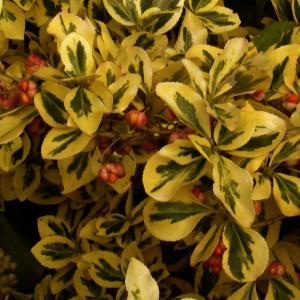

Latin: Euonymus fortunei
Origin: Asia
Plant height: 30 - 60 cm
Reproduction: #Seeds
Difficulty level: #Medium
Tags: #Asia #Euonymusfortunei


Latin: Euonymus alatus
Origin: Asia
Plant height: 80 - 150 cm
Reproduction: #Seeds
Difficulty level: #Medium
Tags: #Asia #Euonymusalatus
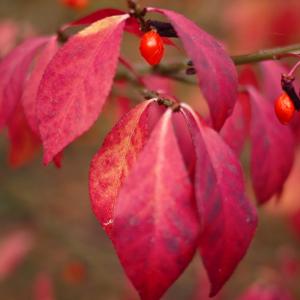

Latin: Euonymus nanus
Origin: Asia
Plant height: 50 - 100 cm
Reproduction: #Seeds
Difficulty level: #Medium
Tags: #Asia #Euonymusnanus
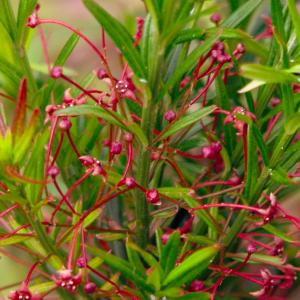

Latin: Euonymus europaeus
Origin: Asia
Plant height: 80 - 150 cm
Reproduction: #Seeds
Difficulty level: #Medium
Tags: #Asia #Euonymuseuropaeus
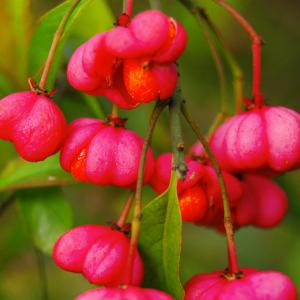

Latin: Euonymus japonicus
Origin: Asia
Plant height: 80 - 150 cm
Reproduction: #Seeds
Difficulty level: #Medium
Tags: #Asia #Euonymusjaponicus


Latin: Gynura sarmentosa
Origin: Asia
Plant height: 30 - 60 cm
Reproduction: #Stems
Difficulty level: #Medium
Tags: #Asia #Gynurasarmentosa
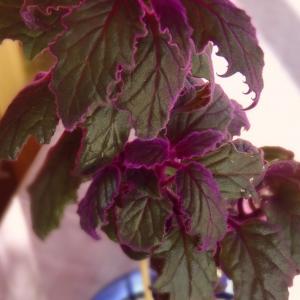

Latin: Gynura aurantiaca
Origin: Asia
Plant height: 50 - 90 cm
Reproduction: #Stems
Difficulty level: #Medium
Tags: #Asia #Gynuraaurantiaca
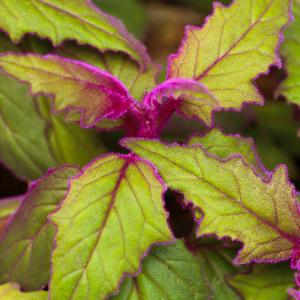

Latin: Ardisia solanacea
Origin: Asia
Plant height: 80 - 200 cm
Reproduction: #Seeds
Difficulty level: #Pro
Tags: #Asia #Ardisiasolanacea
